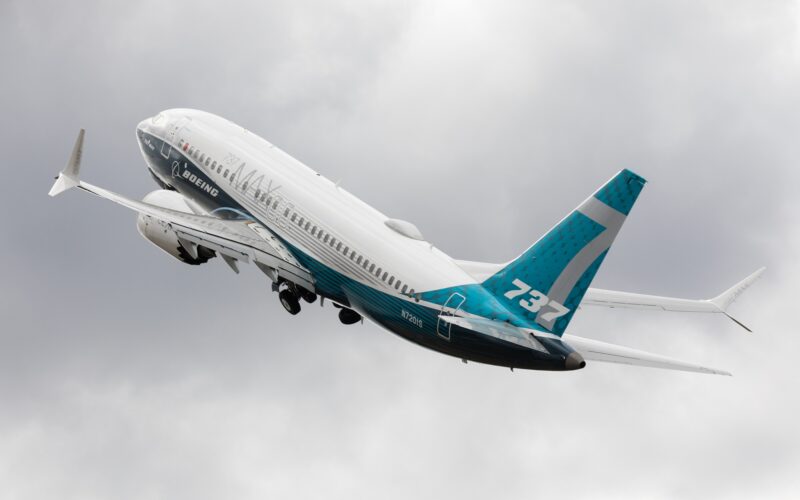The United States (US) Federal Aviation Administration (FAA) has granted Boeing’s petition to temporarily exempt the 737 MAX 7 from lightning protection rules.
According to the FAA’s document, Boeing filed the petition on June 29, 2023, with the 737 MAX’s Development Chief Project Engineer Gary Hamatani asking the regulator to exempt the 737 MAX 7 from certain Code of Federal Regulations (CFR) requirements. The company also provided additional documents to the FAA in August 2023 to support its petition.
“This exemption, if granted, would allow time to incorporate system updates and certify the Stall Management Yaw Damper (SMYD)” on the 737 MAX 7 until March 1, 2027. Boeing specifically requested exemptions from two CFR regulations, namely that each electrical and electronic system’s design, the failure of which would prevent the safe operation of the aircraft, must not be affected by a lightning strike and/or be able to restore normal functionality following exposure to lightning.
Furthermore, each electrical and electronic system must be designed to function properly after exposure to high intensity radiated fields (HIRF) or recover to normal functionality after exposure to HIRFs.
“Boeing states that granting the exemption would allow the use of the [part number] 285A1010-113 SMYD on the Model 737-7 airplane until necessary changes are made as part of the Model 737- 10 amended type certificate program and the subsequent service bulletins are released,” the FAA’s filing read. Once the 737 MAX 10 is certified, changes would apply to all the MAX models, including MAX 8, MAX 9 and the type in question, MAX 7.
According to the manufacturer, the 737 MAX’s SMYD was based on the same part used on the aircraft family’s forebear, the Boeing 737 NextGeneration (NG). The FAA noted that the part includes no hardware changes between the generations, with only “a minimal update to the software to address model specific [737 MAX 7 – ed. note] data for stall warning, stall identification schedule, yaw damper filter and schedule coefficients, and gain schedules”.
However, “subsequent to the development” of the new SMYD, Boeing discovered that it was not compliant with the CFR. As such, “Boeing states that additional certification activity will need to be performed, which Boeing proposes to complete as part of the Model 737-10 amended type certification project”.
Boeing also pointed out that the exemption would allow a new aircraft to enter service more quickly, which “would replace an aging fleet; thus, providing environmental improvements, improved operating economics, and safety enhancements”.
The manufacturer further supported its request by stating that the SMYD’s hardware has remained the same between the NG and MAX aircraft families. Additionally, since the 737 NG and MAX aircraft families accumulated over 240 million flight hours in more than 20 years of service, the part has had “an established performance and safety record with no reported issues related to HIRF or lightning-caused malfunctions”.
Although the FAA requested “additional information from Boeing to better understand the SMYD failure modes, safety assessment, and system architecture”, the regulator eventually granted a time-limited exemption for the 737 MAX 7, to last until March 1, 2027.
However, by August 1, 2025, Boeing will need to provide the FAA with a service bulletin (SB) for a software retrofit for the fleet for the approval of the regulator, which has warned that the 737 MAX 7 will not be allowed to operate beyond the exemption date without the update.
In addition, Boeing is required to incorporate the update into its production no later than March 1, 2027. The update must also to be mentioned in the “airworthiness limitations section of the instructions for continued airworthiness” of each delivered MAX 7.

